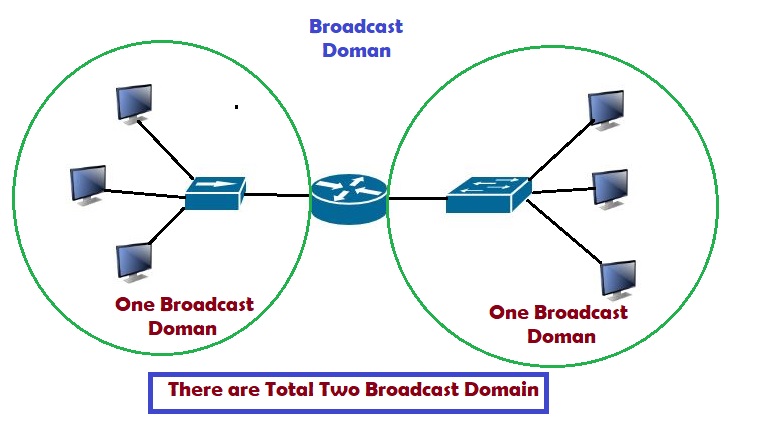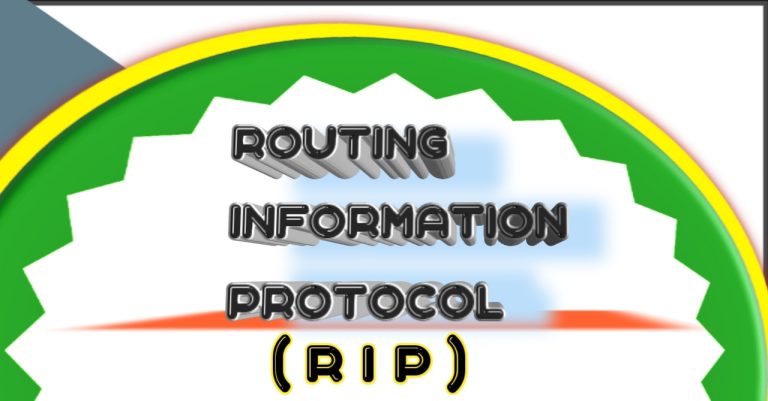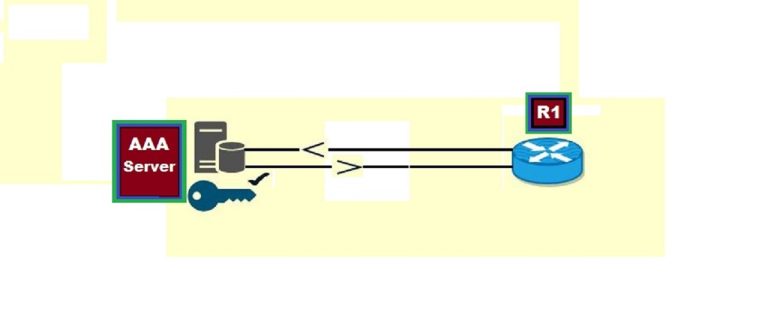What are the collision domain and broadcast domain?
Collision domain and Broadcast domain are the two important terms in the computer networking subject. it defines how data will access the medium. If more than one device sends data at the same time, then there is a chance to collide that data with another device’s data. Also, the Broadcast domain defines the reachability of a message to travel across the network. We will explain the collision domain and broadcast domain in the following paragraphs.
Collision Domain
The collision domain consists of two words: ‘Collision,’ which means ‘to collide,’ and ‘Domain,’ which denotes an area or region. Therefore, collisions take place within a network or a portion of it. When two or more devices attempt to transmit data simultaneously on a shared network segment, a collision occurs. For instance, if a group of computers connected through a hub attempts simultaneous data transmission, a collision domain may form.

Another technical definition of it is “it is a group of Network NICs in which collision can occur. It occurs in different computer networking devices. It takes place in a Hub, Bridge, Switch, and Router Every port in a hub is in one collision domain. Each port on the Bridge, Switch, and router is in a separate collision domain. Hub is a shared medium, so all the ports in a hub will be in the same collision domain. Bridge, Switch, and router ports are in different collision domains, e.g. if a switch, or bridge has 16 ports, then there will be 16 collision domains. Every interface of a router is in a different collision domain.
Broadcast Domain
Broadcast domain is a combination of two words, Broadcast and domain. The term Broadcast means “those messages that are sent to all devices in the network at once”. It is a type of one-to-all communication, while domain means area or region. All the devices in the network can reach other devices through broadcast. The Broadcast Can occur in the hub, or switch. A more technical definition of the Broadcast domain is a “group of network interface cards in which one NIC sends a Broadcast, then the other devices will receive that broadcast or message”. It takes place in the Hub, Bridge, Switch, and Router. All ports in hub and switch are in the same Broadcast domain. Each port in a router is in disparate broadcast domains.

From the above screenshot, it is clear that the Switch has one broadcast domain, while the number of collision domains of a swotcj depends number of ports. If a switch has 24 ports, then it will contain 24 collision domains. Every port of a switch is in a different collision domain.
Similarly, a hub has only one collision domain and one broadcast domain. So, All the ports on the hub is in the same collision domain.
Different Scenario
In the below screenshots, we explain very well the collision domain and broadcast domain.

We defined in the screenshot, that there is only one broadcast domain, while there are Five collision domains in the network.

In the above diagram or network, we have created three different VLANs. We also know that every vlan is in a different broadcast domain because the basic purpose of VLAN is to break the broadcast domain into smaller parts or networks. As there are three VLANs in the network, there are three broadcast domains in it. While the number of collision domains depends on on the number of PCs that exist in the vlan. As VLAN 1 has three PCs, but all the PCs are connected to the hub, so they are all in the same collision domain. Similarly, VLAN 2 has two PCs, so it has two collision domains, while VLAN 3 has also two PCs. So, it has also two collision domains.
So, the total number of Broadcast domains is Three, while the total number of collision domains is 1+2+2=5, and Five is the total number of collision domain that exists.
Likewise in the same way, we are going to take a third scenario, in which we also take a router in the network.

Every interface of a router is in a different broadcast domain. So, it has two broadcast domains. Moreover, there are 9 collision domains in the network as shown above in the diagram.
Keep practicing and perfecting your CCNA skills! Discover more CCNA labs on our practice pages.





